Kaminari !! 💛 ⚡

kaminari !! 💛 ⚡
More Posts from Alwayswritingfanfiction and Others

okay okay okay - hear me out
Xue Yang as Light
A-Qing as Sayu
Song Lan as Soichirou (Xiao Xingchen ???)
but instead of the Death Note anime ... it's the musical, just think about it
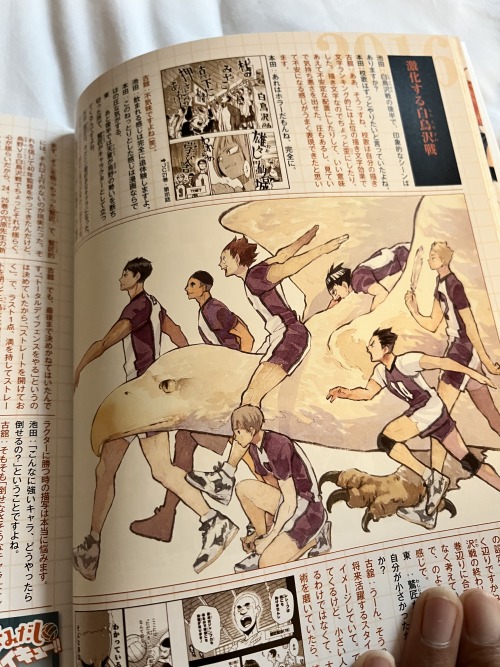




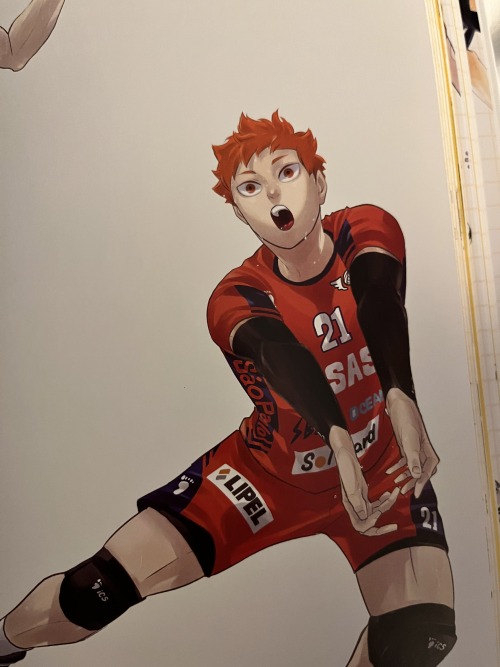
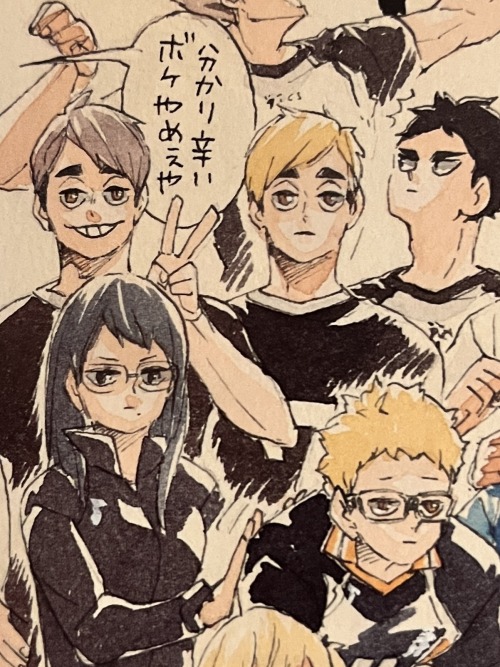
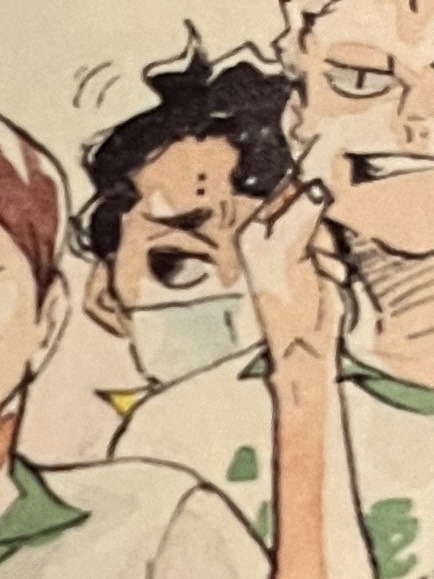



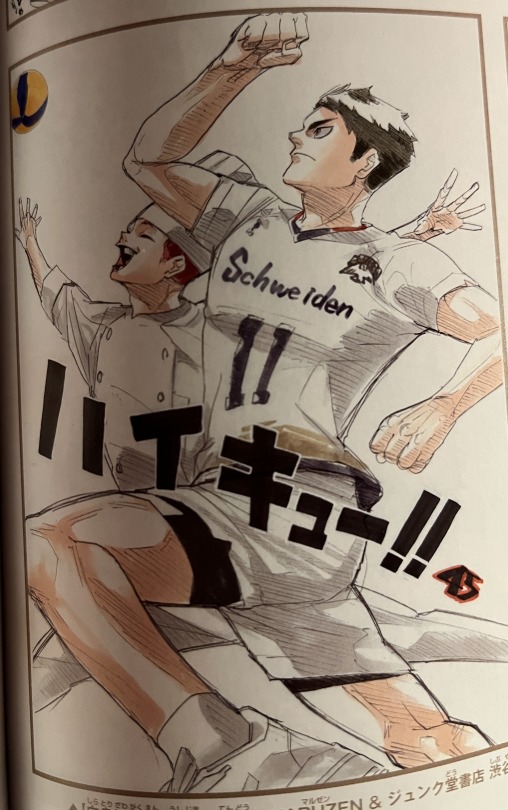


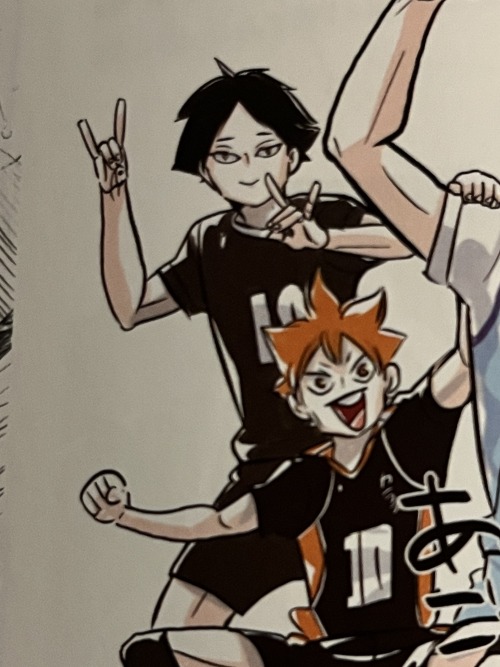







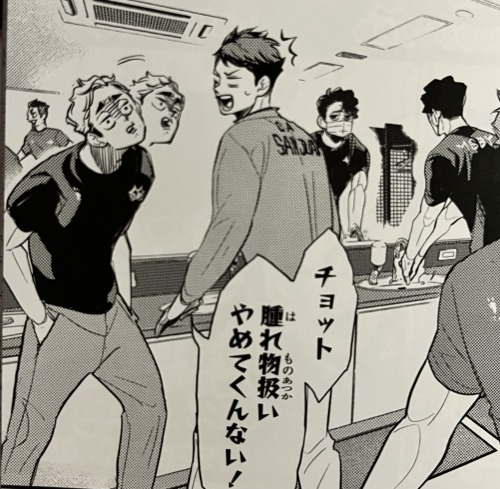

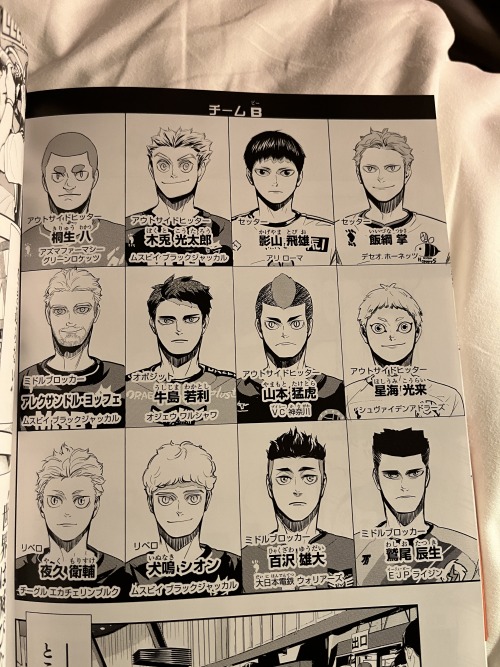





my fav pics from the haikyuu ten year anniversary book!!! (i had no clue what any of it said since i’m still learning Japanese but i was giggling at every single picture 😂)



My boys… 🥺😢



one of my favourite things about my boyfriend is that he's 6'4 but convinced he is a normal sized person and this does not constitute "tall"
once, if not twice, a week the card game shop he plays digimon at upload a top-4 photo best described as "gandalf and the hobbits" and every time he is genuinely baffled as to why he looks like that
Writing Quick Tips: Quotation Marks + Punctuation
There are numerous quirky quotation mark placement + punctuation rules. For the common cases, such as basic dialog, most people know what to do, but we often see people get the less common cases incorrect, so we’ve put together a quick guide to help out!
Note that this post is written according to standard US English usage. The rules are different for other English dialects!
Basic—Punctuation + Quotation Marks in Dialog:
When writing dialog, the punctuation goes inside the quotation marks in the vast majority of cases. (Almost always, but I know if I say “always” someone will find an exception, ‘cause there’s always an exception, because English, why?)
Ex. 1: “Thank you,” she said.
Ex. 2: “Thank you.” She reached out and shook my hand.
Ex. 3: “Thank you!” she said.
Ex. 4: “Thank you?” she said uncertainly.
Ex. 5: “Thank you…” she muttered.
Ex. 6: “Thank y—” A loud pop interrupted her.
Essentially: If the punctuation is part of what’s being said (is demonstrating some aspect of how the dialog has been said) then it goes inside the quotation marks. (The most common exception relates to em dashes—more on that below!)
Intermediate—Punctuation + Quotation Marks in Narrative Text:
In narrative/descriptive text, the placement of punctuation depends on two factors:
a. Which punctuation is in question
b. The nature of the text within the quotation marks.
The basic rules are (this is paraphrased from CMoS 17th Ed.):
Periods: always inside the quotation marks
Ex.: The art of repairing cracked pottery with gold is called “kintsugi.”
Commas: always inside the quotation marks
Ex.: The art of repairing cracked pottery with gold is called “kintsugi,” and the practice originated in Japan.
Semi-colon: always outside the quotation marks
Ex.: The art of repairing cracked pottery with gold is called “kintsugi”; it is also called “kintsukuroi.”
Colon: always outside the quotation marks
Ex.: Other materials can be used for the art of repairing cracked pottery with gold, usually called “kintsugi”: silver and platinum are also sometimes utilized.
Question Marks: depends on what is in quotes. If the quoted material includes the question mark, then it goes inside of the quotes; otherwise, it goes outside the quotation marks.
Ex. 1: Is the art of repairing cracked pottery with gold called “kintsugi”?
Explanation: “kintsugi” isn’t a question, the entire phrase is the question, so the question mark goes outside the quotation marks.
Ex. 2: The article is entitled “Do you have questions about repairing cracked pottery with gold?”
Explanation: the title of the article is itself a question—the question mark is part of the quoted material, and therefore goes inside the quotation marks.
Exclamation Points: work the same way as Question Marks.
Ex. 1: I just learned that the art of repairing cracked pottery with gold is called “kintsugi”!
Ex. 2: The article is entitled “Everything you ever wanted to know about ‘kintsugi’ but hadn’t thought to ask!”
Em Dash: depends on what is in the quotes. If the purpose of the em dash is to denote that the words themselves are being interrupted, the em dash goes inside the quotation marks. If the purpose of the em dash is to mark that a specific action (sans dialog tag!) is interrupting the dialog, then the em dashes go outside. (Sorry this is a little challenging to describe, hopefully the examples help make it clear.)
Ex. 1: “The art of repairing cracked pottery with gold is called—” She broke off when she saw I was holding up a sign that said “kintsugi,” indicating that I already knew.
Explanation: the dialog itself is what is breaking off—in this case because the speaker is being interrupted—so the em dash goes inside the quotation marks.
Ex. 2: “The art of repairing cracked pottery with gold”—she held up a beautiful bowl that appeared to have once been broken, a tracery of gleaming gilding showing where the fault lines once were—“is called ‘kintsugi.’”
Explanation: when an action is interjected into the middle of a line of dialog, the em dashes go on the outside of the quotes.
Ex. 3: “The art of repairing cracked pottery with gold,” she explained as she held up a beautiful bowl, “is called ‘kintsugi.’”
Explanation: this instance has a dialog tag, so commas are used instead of em dashes. The first comma goes within the quotation marks, the second outside.
Advanced—Punctuation + Nested Quotation Marks in Dialog:
Sometimes, a character quotes something they’ve heard. In cases like this, the writer needs to use nested quotation marks (in standard US English, that’s double quotes “” for the first “layer” of dialog and single quotes ‘’ for the second “layer”). The relationship of the punctuation to the nested quote depends on what’s being said. When the dialog is nested, where the punctuation goes follows the same rules as in the “Intermediate—Punctuation + Quotation Marks in Narrative Text” section just above.
Ex. 1: “Did she say ‘Thank you’?” she asked.
Ex. 2: “Did he say ‘Thank you’ to you?” she asked
Ex. 3: “Did he say ‘Thank you,’ or did he say ‘tanks for you’?” she asked
Ex. 4: “How dare he say ‘Thank you’!” she exclaimed.
Ex. 5: “He said ‘Thank you,’” she replied.
Ex. 6: “He said ‘Thank you,’ I think?” she replied.
Ex. 7: “He said ‘Thanks’ and also ‘good luck.’” She nodded as she explained.
Ex. 8: “Actually, he said ‘Thanks!’” she replied.
Ex. 9: “Actually, he asked ‘Should I thank them?’” she replied.
Other Uses of Quotation Marks
Quotation marks can also be used when identifying the titles of works, scare quotes, defining words in foreign languages, etc. Regardless of the uses, the above rules about punctuation placement apply.
So, now you know. :D
Go forth and Write All The Things!
*
Have a writing question? Drop us an ask on Tumblr!
Love what we do? Consider supporting us on Patreon, ko-fi, or by shopping our store!


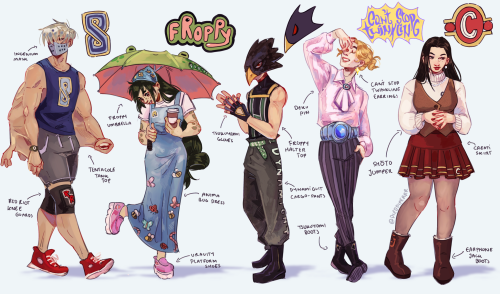

Thee kiddos






Heaven Official's Blessing photocards version
-
 gingernutcalo liked this · 1 month ago
gingernutcalo liked this · 1 month ago -
 jungletopia liked this · 1 month ago
jungletopia liked this · 1 month ago -
 catwith27spoons liked this · 1 month ago
catwith27spoons liked this · 1 month ago -
 idiotlane reblogged this · 1 month ago
idiotlane reblogged this · 1 month ago -
 idiotlane liked this · 1 month ago
idiotlane liked this · 1 month ago -
 theechoingasteroid liked this · 1 month ago
theechoingasteroid liked this · 1 month ago -
 ivesleepy liked this · 1 month ago
ivesleepy liked this · 1 month ago -
 bee-apis liked this · 1 month ago
bee-apis liked this · 1 month ago -
 swamp-deity reblogged this · 1 month ago
swamp-deity reblogged this · 1 month ago -
 maybe-meadowlark liked this · 1 month ago
maybe-meadowlark liked this · 1 month ago -
 howdidigethereagain liked this · 1 month ago
howdidigethereagain liked this · 1 month ago -
 arcadiandreamers reblogged this · 1 month ago
arcadiandreamers reblogged this · 1 month ago -
 yaraneechan liked this · 1 month ago
yaraneechan liked this · 1 month ago -
 raspberriscones liked this · 1 month ago
raspberriscones liked this · 1 month ago -
 lanieatscats liked this · 1 month ago
lanieatscats liked this · 1 month ago -
 gamerbot-22 liked this · 1 month ago
gamerbot-22 liked this · 1 month ago -
 cloudiisky1 liked this · 1 month ago
cloudiisky1 liked this · 1 month ago -
 bisexualshakespeare liked this · 1 month ago
bisexualshakespeare liked this · 1 month ago -
 noodlethegay reblogged this · 1 month ago
noodlethegay reblogged this · 1 month ago -
 square-mug liked this · 1 month ago
square-mug liked this · 1 month ago -
 noodlethegay liked this · 1 month ago
noodlethegay liked this · 1 month ago -
 ghiblixco liked this · 1 month ago
ghiblixco liked this · 1 month ago -
 inf-01 liked this · 1 month ago
inf-01 liked this · 1 month ago -
 lekkodoesthings liked this · 1 month ago
lekkodoesthings liked this · 1 month ago -
 mayhemkiba liked this · 1 month ago
mayhemkiba liked this · 1 month ago -
 ebonytree liked this · 1 month ago
ebonytree liked this · 1 month ago -
 knadhifa95 liked this · 1 month ago
knadhifa95 liked this · 1 month ago -
 prepschooltrash reblogged this · 1 month ago
prepschooltrash reblogged this · 1 month ago -
 sockums-or-sugori liked this · 1 month ago
sockums-or-sugori liked this · 1 month ago -
 famousbailiffpainterstudent-blog liked this · 1 month ago
famousbailiffpainterstudent-blog liked this · 1 month ago -
 bovigay liked this · 1 month ago
bovigay liked this · 1 month ago -
 spacefinch reblogged this · 1 month ago
spacefinch reblogged this · 1 month ago -
 mellowpuppyruins liked this · 1 month ago
mellowpuppyruins liked this · 1 month ago -
 cheekypenguu liked this · 2 months ago
cheekypenguu liked this · 2 months ago -
 matriarchofworms liked this · 2 months ago
matriarchofworms liked this · 2 months ago -
 senechkaaaa liked this · 2 months ago
senechkaaaa liked this · 2 months ago -
 ghostedmercury liked this · 2 months ago
ghostedmercury liked this · 2 months ago -
 catslick liked this · 2 months ago
catslick liked this · 2 months ago -
 roughtimeminicomics liked this · 2 months ago
roughtimeminicomics liked this · 2 months ago -
 websterwraith liked this · 2 months ago
websterwraith liked this · 2 months ago -
 istillintoyou liked this · 2 months ago
istillintoyou liked this · 2 months ago -
 why-must-i liked this · 3 months ago
why-must-i liked this · 3 months ago -
 taievieu liked this · 3 months ago
taievieu liked this · 3 months ago -
 remembertosaygoodbye liked this · 3 months ago
remembertosaygoodbye liked this · 3 months ago -
 svalireo liked this · 3 months ago
svalireo liked this · 3 months ago -
 kittysoupp reblogged this · 3 months ago
kittysoupp reblogged this · 3 months ago -
 badslittlemuffin liked this · 3 months ago
badslittlemuffin liked this · 3 months ago -
 angelsbutchery reblogged this · 3 months ago
angelsbutchery reblogged this · 3 months ago -
 forgetfulbones liked this · 3 months ago
forgetfulbones liked this · 3 months ago -
 moxie-14 liked this · 3 months ago
moxie-14 liked this · 3 months ago

(SprinK/PhoeniX on AO3) mxtx and mha fics | she/her | hi, i don't know what I'm doing
241 posts